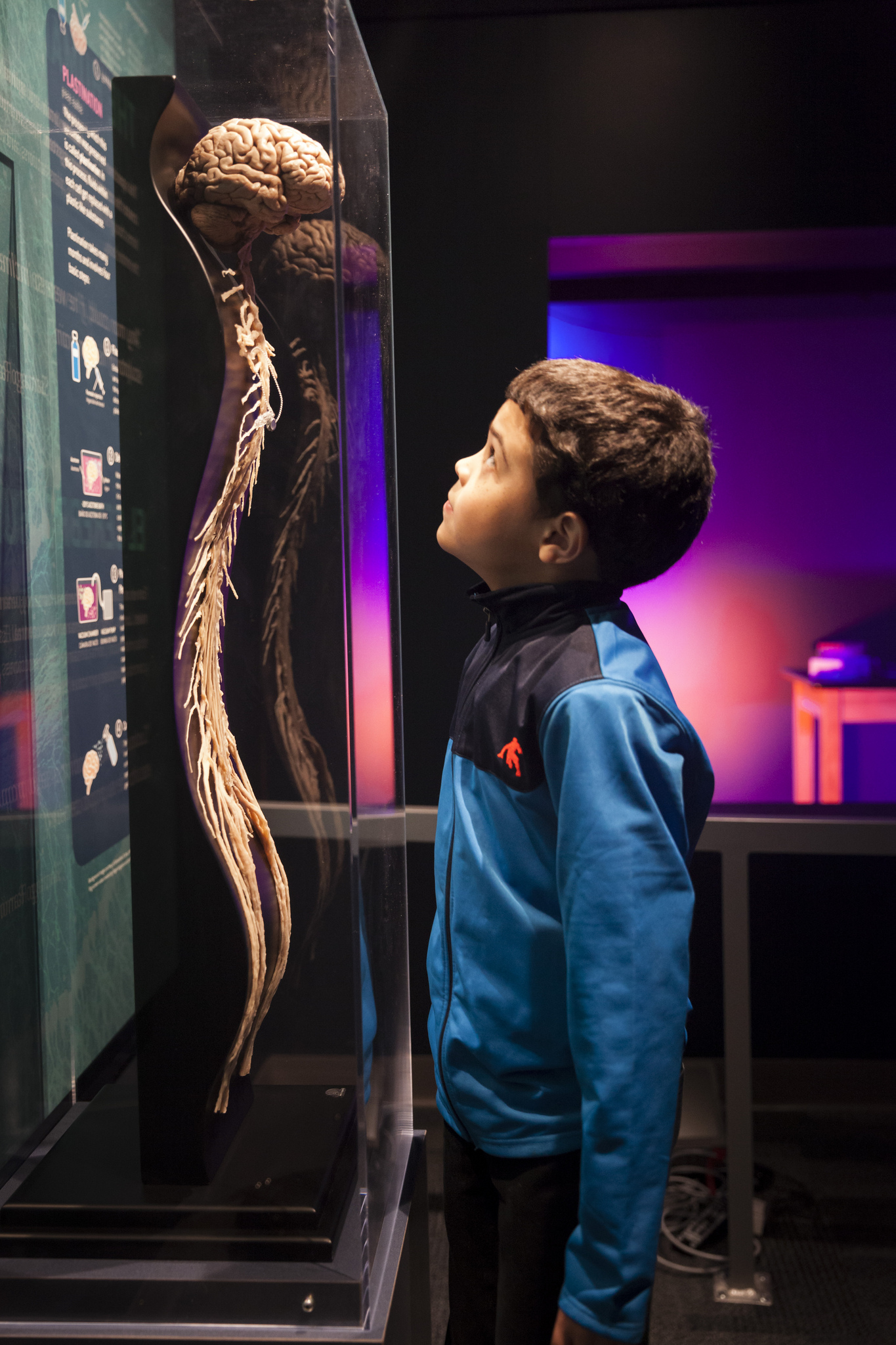Sparking Interest in the Brain
By Lynn Laurenti
One effective way to engage the interest of potential neuroscientists is to give them the opportunity to see how the brain controls muscle movement in organisms ranging from a tiny worm (C. elegans) to human beings.
That’s part of the hands-on approach of the FAU team leading a new educational program for middle-school students called Advancing STEM Community Engagement through Neuroscience Discovery (ASCEND). STEM is an acronym for science, technology, engineering and mathematics – career fields of vital importance to the United States’ competitive strength in the 21st century.
The ASCEND program, funded by a four-year $780,000 grant from the Stiles-Nicholson Foundation, began with a series of one-day events called Brain Sparks, held at the South Florida Science Center and Aquarium’s STEM Studio in Abacoa, adjacent to the Jupiter campus. At the introductory sessions, students learned how their brains control muscle movement by putting electrodes on their cheeks and visualizing electrical activity on an iPad as they chewed gummy bears. That and other demonstrations of brain activity in real time, and demonstrations of the unique brains of worms, fish and octopuses, prompted some of the seventh- and eighth-grade participants to sign up for a more comprehensive two-semester program. They will work together in monthly after-school sessions under the guidance of post-doctoral fellows, graduate students and undergraduate students with neuroscience expertise.
Collaborating institutions include the Max Planck Florida Institute for Neuroscience, Scripps Research and FAU’s Harriet L. Wilkes Honors College. “We’ve created three teams that together drive the ASCEND program,” said Nicole Baganz, Ph.D., who is overseeing the program in her capacity as director of community engagement and programming for the FAU Brain Institute. “The Talks and Tours team has responsibility for creating the program’s hand’s on and lecture-based curriculum. During our initial sessions, we caught the students’ interest by allowing them to see the neurons of the microscopic worm C. elegans, engineered by FAU neuroscientists to become fluorescent.” The second team, Media Mavens, is developing podcasts and webcasts based on knowledge gained through Talks and Tours. The third team, Virtual Voyagers, is demonstrating and developing content using touch screen interactives, virtual reality and augmented reality applications.
ASCEND participants start by learning about cells and advance to gaining knowledge of neural networks and complex brain disorders. Students will finish the program with a science poster presentation.
“The students are really excited about this program,” Baganz said. “It goes far beyond the typical classroom experience. As students were leaving a session, I heard one boy say to his mother, ‘I love it, Mom! It’s the coolest thing I’ve ever done in my life!’”

To bring this abstract threat home, Renne’s team focused on the future of a current two-block stretch of Los Olas Boulevard in downtown Fort Lauderdale. The team took 360-degree photos of the shops, galleries and greenery along the boulevard, which is located north of the New River, a tidal waterway that flows into the Atlantic Ocean. Using a variety of software packages deployed by architects, urban planners, engineers and video game programmers, the team superimposed the imagery in three dimensions and added a rendering of rising water.
Their simulation of the two-block stretch in the year 2060 shows life continuing unchanged. However, two decades later, water is depicted blanketing the street and door steps of Los Olas Boulevard. In 2100, the area around the New River is projected to be under up to 37-inches of water, with people standing in waist-deep water.
Using virtual reality, this preliminary effort required that the user be immersed in an artificial environment with goggles and sometimes headphones. Other visualization alternatives are being explored, including augmented reality, in which special glasses add virtual objects to a view of the real world.
“Eventually, we would like to create an app that would allow you to scan your environment with your phone, and see exactly where the water would be,” Renne said. “We are trying to figure out the most cost effective, user friendly way to visualize the future.” Renne hopes that immersive visualizations might help to prevent the most devastating consequences here by spurring people to think about ways to prepare and adapt.
“This will happen over the next couple of generations,” Renne said. “The quicker we start to address it and do something about it, the better off we will be.”
If you would like more information, please contact us at dorcommunications@fau.edu.
Brain Exhibit Opens at the South Florida Science Center and Aquarium
03/23/2019

The South Florida Science Center and Aquarium’s Journey Through the Human Brain, a $2.5 million, 2,500-squarefoot permanent exhibit is now open after three years of development.
The exhibit is a partnership between the South Florida Science Center and Florida Atlantic University’s Brain Institute. Major portions of the exhibit also feature significant hands-on participation from the Max Plank Florida Institute of Neuroscience and Scripps Research Institute of Florida.
The exhibit opening also coincides with Florida Atlantic University’s Brain Institute’s “Brainy Days 2019,” a celebration of neuroscience throughout the month of March.
